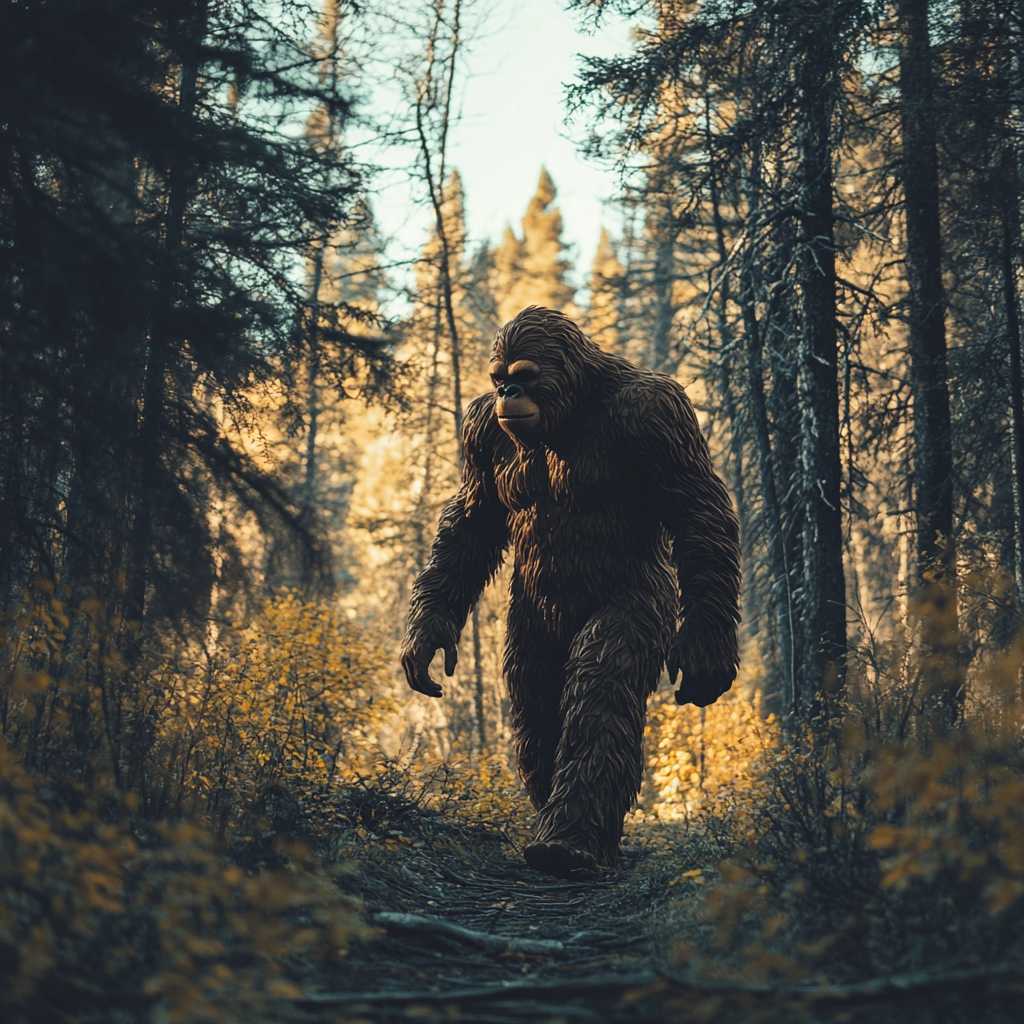The legend of Sasquatch, also known as Bigfoot, has fascinated humanity for generations. This towering, ape-like creature is said to roam the dense forests of North America, evading human contact while leaving behind only footprints and whispered stories. Whether you view Sasquatch as a myth, a cryptid, or a possibility, it occupies a unique space in folklore and popular culture. What drives our fascination with this elusive figure?
Sasquatch is believed to be a large, hairy, bipedal humanoid standing between six and nine feet tall. Its most distinguishing features include its immense size, human-like gait, and the eerie howls or knocks often associated with its presence. Descriptions often liken it to a mix between an ape and a man, and believers argue that Sasquatch could represent a relic species, perhaps a descendant of the extinct Gigantopithecus.
Historical Sightings: The Early Encounters
The story of Sasquatch begins with the oral traditions of indigenous peoples, many of whom spoke of a “wild man” or “forest giant.” Tribes across North America, such as the Coast Salish and the Iroquois, passed down tales of large, mysterious creatures who lived in the wilderness. Often, these beings were seen as spiritual entities or guardians of nature rather than physical creatures.
European settlers in the 18th and 19th centuries also reported strange encounters. From British Columbia to Appalachia, stories of unusually large footprints and unidentifiable howls began to circulate. Some early settlers claimed to have seen a creature resembling the descriptions in indigenous legends, lending weight to the idea that Sasquatch could be more than myth.
By the mid-20th century, Sasquatch was becoming a cultural phenomenon. Reports from loggers, hunters, and hikers spanned decades, and each account added new layers to the mystery. Were these early sightings the result of genuine encounters, or were they inspired by the rich oral histories that preceded them? The truth remains as murky as the forests Sasquatch is said to inhabit.
Famous Sasquatch Sightings: Fact or Fiction?
Among the most famous encounters is the Patterson-Gimlin Film of 1967, a short clip purporting to show a Sasquatch striding along Bluff Creek, California. To this day, the footage is hailed by some as irrefutable evidence and dismissed by others as a clever hoax. Could this grainy film capture a genuine Sasquatch, or is it an elaborate prank that has withstood the test of time?
Beyond the Patterson-Gimlin Film, there are countless other reports of sightings. In 1924, a group of miners claimed to have been attacked by a group of “ape-men” near Mount St. Helens. More recently, thermal imaging cameras and modern equipment have captured unexplainable shapes in the wilderness, reigniting debates. The question persists: Are these sightings evidence of Sasquatch’s existence, or are they the result of misidentification and overactive imaginations?
Skeptics often point out inconsistencies in these accounts, from unreliable witnesses to the lack of physical evidence. Yet believers argue that such dismissals ignore compelling details, such as the uniformity of descriptions across cultures and centuries. Is it possible that all these encounters are merely coincidences—or could they point to something extraordinary?
The Science Behind Sasquatch: Skepticism vs. Evidence
Scientific inquiry into the Sasquatch phenomenon ranges from outright dismissal to cautious curiosity. Biologists and anthropologists argue that the absence of a body, bones, or definitive DNA evidence makes the creature’s existence unlikely. Without a specimen to study, many in the scientific community remain skeptical.
However, believers present what they claim is compelling evidence, from large, unexplained footprints to audio recordings of strange vocalizations. Some even suggest that Sasquatch possesses advanced intelligence or unique survival mechanisms, which could explain its ability to avoid detection. Could it be that science simply hasn’t caught up to what eyewitnesses already know?
Interestingly, some researchers approach the topic with an open mind, viewing Sasquatch as a potential discovery akin to finding the coelacanth, a prehistoric fish once thought extinct. Advances in technology, such as DNA analysis and high-resolution imaging, have made it easier to investigate claims. But for now, the divide between skepticism and belief remains wide, with both sides presenting passionate arguments.
Modern-Day Sasquatch Encounters: Are We Still Searching?
In the digital age, Sasquatch sightings have become more accessible and widespread. Social media platforms and online forums allow enthusiasts to share encounters, videos, and theories in real-time. Modern technologies, such as drones and motion-sensing cameras, are increasingly used in the search for evidence. Yet, definitive proof remains elusive.
Recent reports have come from as far afield as Washington State, Canada, and even the Australian wilderness, where some claim to have seen a similar creature known as the Yowie. While skeptics dismiss these sightings as hoaxes or misidentifications, believers argue that they provide crucial data. Is it possible that Sasquatch is not one creature but part of a global phenomenon?
The search for Sasquatch continues to evolve, blending age-old curiosity with modern tools. Whether through scientific expeditions, amateur enthusiasts, or indigenous wisdom, the hunt for the truth persists. As long as the forests remain vast and untamed, the mystery of Sasquatch will endure.
Key Takeaways
- Sasquatch is deeply rooted in both indigenous lore and modern culture, inspiring generations.
- Despite numerous sightings and advances in technology, definitive proof remains elusive.
- The debate over Sasquatch—myth, cryptid, or reality—continues to captivate audiences worldwide.
In addition to this article, we would like to advise you to read our article, where we talked about the most common myths about bigfoot.
FAQ
Sasquatch is thought to be a large, ape-like creature inhabiting the forests of North America.
The Patterson-Gimlin Film, shot in 1967, remains the most debated evidence.
A lack of physical evidence, such as bones or DNA, keeps Sasquatch’s existence unverified.

